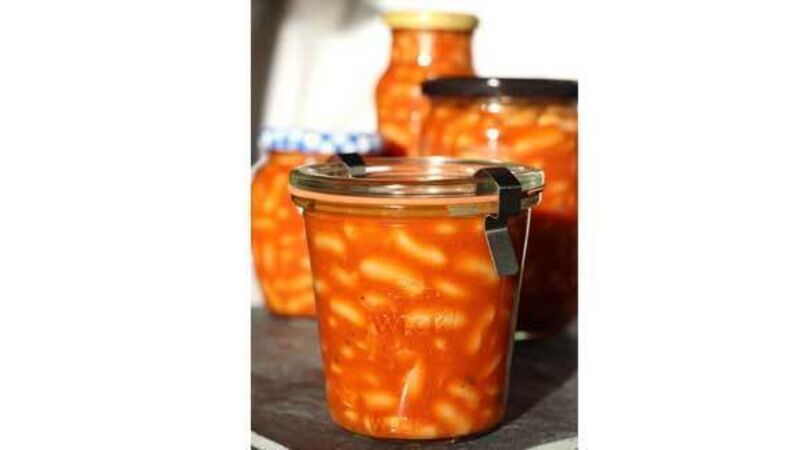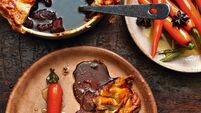Beans are a fantastic source of energy which greatly boost your gut flora

We’ve been hearing a lot about fermented foods in the past year or so, it seems that this ancient way of preserving foods and making them more digestible and nutritious, is becoming the latest food fad.
It’s ironic that something so old can become so new, but sometimes old wisdom is the best and with gut issues like irritable bowel syndrome and food intolerances on the rise, not to mention overuse of antibiotics, these probiotic foods can help populate your gut with good gut flora, improving digestive health and boosting your immune system.
However, before we all go running to make kimchi, much as I love kimchi, the gut has to be ready to receive these great foods, this is where prebiotic foods come in.
“Prebiotics”, I hear you cry “What next?”.
There always seems to be some new things but prebiotic foods are gently, anti-inflammatory and widely available to us.
Chances are you’ve been chowing down on them all your life and not even known you were doing it.
Prebiotics are like the fuel to fire the probiotic foods. Remember when we used to hear about eating fibre all the time? Well that’s what prebiotics mostly comprise.
Not surprisingly, cabbage is the number one prebiotic food and that’s why it’s the basis for so many probiotic ferments like sauerkraut, kimchi et al.
Cabbage is versatile, cheap and grows here in abundance.
Even making coleslaw is a great start to getting prebiotics into you.
While you’re at it, why not pack a jar full of salted raw cabbage and ferment it?
One of the most widely available prebiotic foods is the yummy banana.
Bananas soothe the gut and are full of natural fibres that support good gut bacteria.
It’s very important to eat bananas that are fully ripe however, they should have some black spots on them.
Bananas with a green tinge are not ready to eat and are very hard to digest, but you can tell that from their waxy texture and slightly bitter taste.
Asparagus is great to stop bloating and is also packed with fibre.
Get more of it into you by having it for breakfast, dipped into a runny boiled egg, or thrown into the blender in a green smoothie.
Aliums like garlic and onions are fantastic probiotic foods and you don’t have to eat them raw.
Imagine a curry or meat sauce without that onion base?
Cooked onions are great for your gut health, not to mention that they ward off colds too and help to cure them. Garlic is onion’s closest cousin and does great work in the gut as well as aiding a healthy nervous system.
Garlic is also credited as nature’s antibiotic and many older folk take a raw clove every day to keep fit and healthy in winter.
If you can’t face swallowing raw garlic, then blitz it up in some hummus or guacamole. Use leeks to add flavour to a roast chicken, they get deliciously sweet and sticky too.
Artichokes, apples, root veggies, it’s not rocket science, and the more colourful the better.
Beans and legumes are in the same category but it’s essential that they are properly prepared.
Home-cooked beans generally have better flavour and texture.
Soaking, or fermenting beans greatly reduces their gassy effects, if you make these fermented baked beans, they store for months in sealed jars in the fridge afterwards and make a fantastic instant meal, heated and topped with some cheese, on a slice of sourdough toast, that’s all your good stuff in the form of beans on toast
Fermented Baked Beans
500g/1lb white beans like haricots
2 tblsp whey (leftover from cheese or yogurt making)
Water
1 250ml jar passata
1 tblsp white wine/cider vinegar
1 tsp sea salt 1 tsp smoked paprika
2 bay leaves
1 sprig fresh thyme and rosemary
50g/2oz butter or duck fat
2 tblsp honey Water
1. Leave the beans to soak overnight in cold water. The next day strain them and top up with fresh water, add the whey and give it a stir. Cover loosely and leave everything to ferment for 6-7 days.
2. Heat the oven to 180C.
3. Strain and rinse the beans and put them into a large casserole with a tight fitting lid with the remaining ingredients and enough water to ensure they are covered, give everything a stir.
Bring the pot to a bubble on top of the cooker and then pop on the lid and transfer it to the oven to bake at the high temperature for 15 mins, then reduce the heat to 150C for 3-4hours.
Check the beans occasionally to make sure they aren’t drying out.
4. To store the beans, sterilise some jars by boiling them for 10 minutes or putting them through the dishwasher. Fill up the hot jars with the hot beans and pop the lids on tightly.
This recipe is from my new book Val’s Kitchen, out now in all good bookshops








